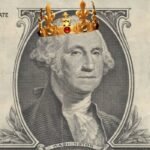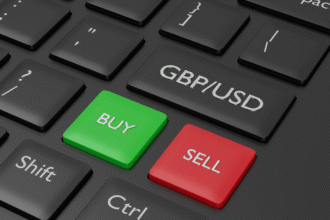- The Pound Sterling hit over two-month highs above 1.2650 against the US Dollar.
- GBP/USD traders will likely take a breather in a relatively light week on data releases ahead.
- The pair broke above the 100-day SMA barrier; will the 200-day SMA be surpassed next week?
The Pound Sterling (GBP) hit its highest in over two months against the US Dollar (USD) as GBP/USD buyers remained unstoppable on acceptance above the 1.2600 level.
Pound Sterling failed to benefit from hot UK inflation
The third straight weekly decline in the USD strengthened the major’s recovery momentum while scaling all major technical hurdles. US President Donald Trump’s tariff threats and geopolitical tensions surrounding Russia and Ukraine peace deal returned but failed to lift the haven demand for the Greenback.
Investors resorted to running for cover in Gold price and US equity indices instead, driving them to record highs.
Trump said midweek that he will announce tariffs related to imports of timber, cars, semiconductors and pharmaceuticals “over the next month or sooner”, re-emphasizing his planned announcement a day earlier about imposing auto tariffs “in the neighbourhood of 25%” and similar duties on semiconductors and pharmaceuticals.
In a Fox News interview late Wednesday, US Commerce Secretary Howard Lutnick said that President Trump’s “goal is simple: to abolish the Internal Revenue Service and let all the outsiders pay.”
Meanwhile, tensions loomed between the US and the European Union (EU) after the US excluded Ukraine and the EU from its peace talks to end the Ukraine conflict with Russian top delegates. This put pressure on the EU to form a clear and cohesive response to Trump’s decision to negotiate directly with Russia to end the war in Ukraine.
Further, expectations that the US Federal Reserve (Fed) will likely stay on its two interest-rate cut trajectory this year continued to undermine the sentiment around the US Dollar.
The hawkish Minutes of the Fed’s January meeting also failed to trigger any positive reaction around the buck. The Minutes backed the Fed’s cautious stance on Wednesday as it showed that “many participants noted that the committee could hold the policy rate at a restrictive level if the economy remained strong and inflation remained elevated” in the face of Trump’s trade policies.
The final data release of the week showed that the US S&P Global Composite PMI declined to 50.4 in February’s flash estimate from 52.7 in January. This print showed a loss of growth momentum in the private sector’s economic activity and made it difficult for the USD outperform its rivals heading into the weekend.
On the Pound Sterling side of the story, the hotter-than-expected UK Consumer Price Index (CPI) data had little to no impact on the market expectations of roughly 50 basis points (bps) of rate cuts by the year-end.
The UK annual inflation rate rose sharply to 3% in January, coming in above expectations of a 2.8% reading, according to the Office for National Statistics (ONS).
This is due to the bigger-than-expected jump in British inflation attributed to one-off or seasonal catalysts such as a steep rebound in airfare prices and the introduction of value-added tax (VAT) on private school fees.
Meanwhile, the ONS said on Tuesday that the UK Unemployment Rate in the three months to December was 4.4%, where it stood in the three months to November, bettering the market forecast of 4.5%.
Tight labor market conditions and the cautious remarks from BoE Governor Andrew Bailey helped the Pound Sterling hold its ground against the US Dollar during the week.
Bailey noted that “the impact of US trade tariffs on inflation is much more ambiguous than their impact on growth if they lead to fragmentation of the world economy.”
Stronger-than-expected jump in UK consumer spending also aided the Pound Sterling’s winning momentum. British Retail Sales rebounded 1.7% month-on-month (MoM) in January after declining 0.6% in December. Markets estimated a 0.3% jump in the reported month.
However, mixed UK business PM data capped the pair’s upside. UK S&P Global Services PMI rose slightly to 51.1 in February, providing a positive surprise. On the other hand, the Manufacturing PMI unexpectedly declined to 46.4 in February.
Eyes on US PCE inflation data and Trump’s tariff talks
It’s a relatively quiet week for Pound Sterling traders in terms of economic data releases from the United Kingdom (UK), and hence, the focus will remain on the speeches from BoE and Fed policymakers, top-tier US events and Trump’s tariff announcements.
On Monday, BoE Deputy Governor Clare Lombardelli and the Monetary Policy Committee (MPC) member Swati Dhingra are scheduled to make their respective public appearances. At the same time, the data docket is absolutely dry on both sides of the Atlantic.
Tuesday will feature the BoE’s Quarterly Bulletin and the US Conference Board (CB) Consumer Confidence data. BoE Chief Economist Huw Pill will speak that day at the opening bells of the US markets.
BoE official Dhingra is set to speak again this week on Wednesday. Ahead of that, the mid-tier US Homes Sales data could entertain traders.
Thursday starts getting a bit busier, with the US Durable Goods, Jobless Claims and Pending Home Sales data on the calendar.
The January US Personal Consumption Expenditures (PCE) Price Index will stand out on Friday. The pair traders will watch out for the US Q4 Gross Domestic Product (GDP) revision and BoE policymaker Dave Ramsden’s speech for further directional impetus.
GBP/USD: Technical Outlook
The daily chart shows that GBP/USD finally found acceptance above the static resistance around the 1.2640 region on Thursday.
The upside break also prompted buyers to recapture the 100-day Simple Moving Average (SMA) at 1.2649 on a sustained basis.
The 14-day Relative Strength Index (RSI) remains comfortable above the midline, currently near 65, suggesting that the bullish bias remains intact in the near term.
If the upside gathers traction, the next powerful resistance is at the 200-day SMA of 1.2788. A sustained break above it will initiate a fresh uptrend toward the 1.2850 psychological level.
The 1.2900 round level could challenge the bearish commitments.
If the pair embarks upon a corrective journey, the immediate support is aligned with the weekly low of 1.2563.
Should sellers find a firm foothold underneath that level, the 21-day SMA at 1.2500 will be next on their radars.
Further south, the 50-day SMA at 1.2458 will rescue buyers, below which the rising trendline support near 1.2400 could be challenged.
Inflation FAQs
Inflation measures the rise in the price of a representative basket of goods and services. Headline inflation is usually expressed as a percentage change on a month-on-month (MoM) and year-on-year (YoY) basis. Core inflation excludes more volatile elements such as food and fuel which can fluctuate because of geopolitical and seasonal factors. Core inflation is the figure economists focus on and is the level targeted by central banks, which are mandated to keep inflation at a manageable level, usually around 2%.
The Consumer Price Index (CPI) measures the change in prices of a basket of goods and services over a period of time. It is usually expressed as a percentage change on a month-on-month (MoM) and year-on-year (YoY) basis. Core CPI is the figure targeted by central banks as it excludes volatile food and fuel inputs. When Core CPI rises above 2% it usually results in higher interest rates and vice versa when it falls below 2%. Since higher interest rates are positive for a currency, higher inflation usually results in a stronger currency. The opposite is true when inflation falls.
Although it may seem counter-intuitive, high inflation in a country pushes up the value of its currency and vice versa for lower inflation. This is because the central bank will normally raise interest rates to combat the higher inflation, which attract more global capital inflows from investors looking for a lucrative place to park their money.
Formerly, Gold was the asset investors turned to in times of high inflation because it preserved its value, and whilst investors will often still buy Gold for its safe-haven properties in times of extreme market turmoil, this is not the case most of the time. This is because when inflation is high, central banks will put up interest rates to combat it. Higher interest rates are negative for Gold because they increase the opportunity-cost of holding Gold vis-a-vis an interest-bearing asset or placing the money in a cash deposit account. On the flipside, lower inflation tends to be positive for Gold as it brings interest rates down, making the bright metal a more viable investment alternative.






















